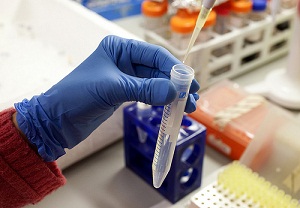Question:
What is protein labelling and what should you do to ensure a successful reaction?
The Protein Man Says:
In a nutshell, protein labelling refers to the use of the appropriate molecular labels to detect or purify the labelled protein and its binding partners. While there are a lot of molecular labels and labelling strategies available, you should make sure that your final choice fits the intended application perfectly or you may not get the kind of results that you need.
 Types of Protein Labels
Types of Protein Labels
There are three main types of protein labels available for use in most biological studies – biotin, enzyme conjugates and fluorescent probes. Which one should you use for your particular research? Here are some things that you may need to consider when choosing the type of label that will go well with your experiments.
Biotin
Biotin binds exceptionally well with avidin, streptavidin or NeutrAvidin protein through chemical or enzymatic means. At 244.4 Da, biotin is considerably smaller than enzyme conjugates but its interaction with the aforementioned proteins can be considered one of the strongest protein-ligand interactions there is, making it ideal for a wide range of analytical applications. And since it is a relatively small molecule, biotin does not disrupt normal protein functions in any way.
Since there are a lot of biotinylation reagents available, you need to consider the length of the spacer arm and their reactive group as well as the solubility, membrane permeability and reversibility of your chosen reagent to ensure a successful reaction.
Enzyme Conjugates
Some enzymes such as horseradish peroxidise (HRP) and alkaline phosphatise (AP) can function as highly sensitive probes ideal for the detection of proteins in whole cells, tissues and/or lysates. They can be used to conjugate antibodies, streptavidin and other proteins using a wide variety of mechanisms. Since they are larger than biotin, you will need to add a substrate to your chosen enzyme conjugates to generate the appropriate colorimetric, chemiluminescent or fluorescent signal outputs.
Fluorescent Probes
Biological fluorophores such as rhodamine dye and organic dyes such as FITC are suitable for most proteins (especially antibody labelling) and respond distinctly to light by producing a detectable signal without requiring any additional reagents. This makes them ideal for the detection of protein location, identification of protein complex formation and conformational changes and in monitoring biological processes in vivo.
The success of your biological experiments rely on your ability to choose the most appropriate protein label so make sure you get it right.
Image By - Vall d'Hebron Research Institute (VHIR)






